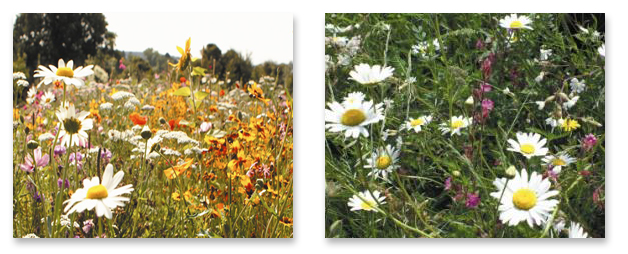What are grasslands exactly…..
Wildlife-rich grasslands were at the heart of the English landscape. It has been suggested that they have been in existence for over 6000 years, created as a result of human activity. This means that although they are not purely ‘natural’ they are termed ‘semi-natural’ and are of vital importance.
Why?
Quite simply their wildlife encompasses native species which have adapted and evolved to reply upon them for food, shelter and therefore their very survival. Species include birds such as the barn owl, skylark, and lapwing; mammals like voles and hares, as well as many types of invertebrates such as butterflies and bees. They also support an incredibly rich and diverse array of flora. For example, the green-winged orchid, ox-eye daisy and common mouse-ear. They also support more priority species of wildlife than any other habitat.

In the last seventy years it is estimated that 98% of the UK’s wildlife-rich grasslands have been destroyed as a result of intensive agriculture, neglect and urban development. Those sites that have survived, particularly lowland meadows, are now so small they no longer support the plants and insects that depend upon them. Typically they now occur in patches smaller than 2ha. Not only are the remaining patches small but they are usually isolated from each other by arable land, improved grassland or urban areas. This means that wildlife dependent on these grasslands cannot move easily between the patches, and this isolation threatens those species with extinction. This effect is known as habitat fragmentation.
It’s certainly encouraging to know that there are organisations in the UK who are on a mission to bring back wildflower meadows into the UK. The Wildlife Trust and The Grassland Trust are two such organisations that have pledged themselves to saving our remaining wildflower meadows, as well as try to encourage the establishment of meadows over different sites throughout the UK. Both organisations invest a huge amount of effort in to managing these rare habitats.
We certainly salute them both with what we would like to call their ‘wildflower meadow quest!’